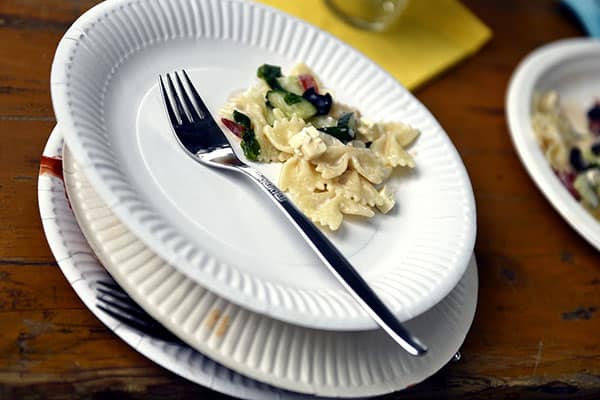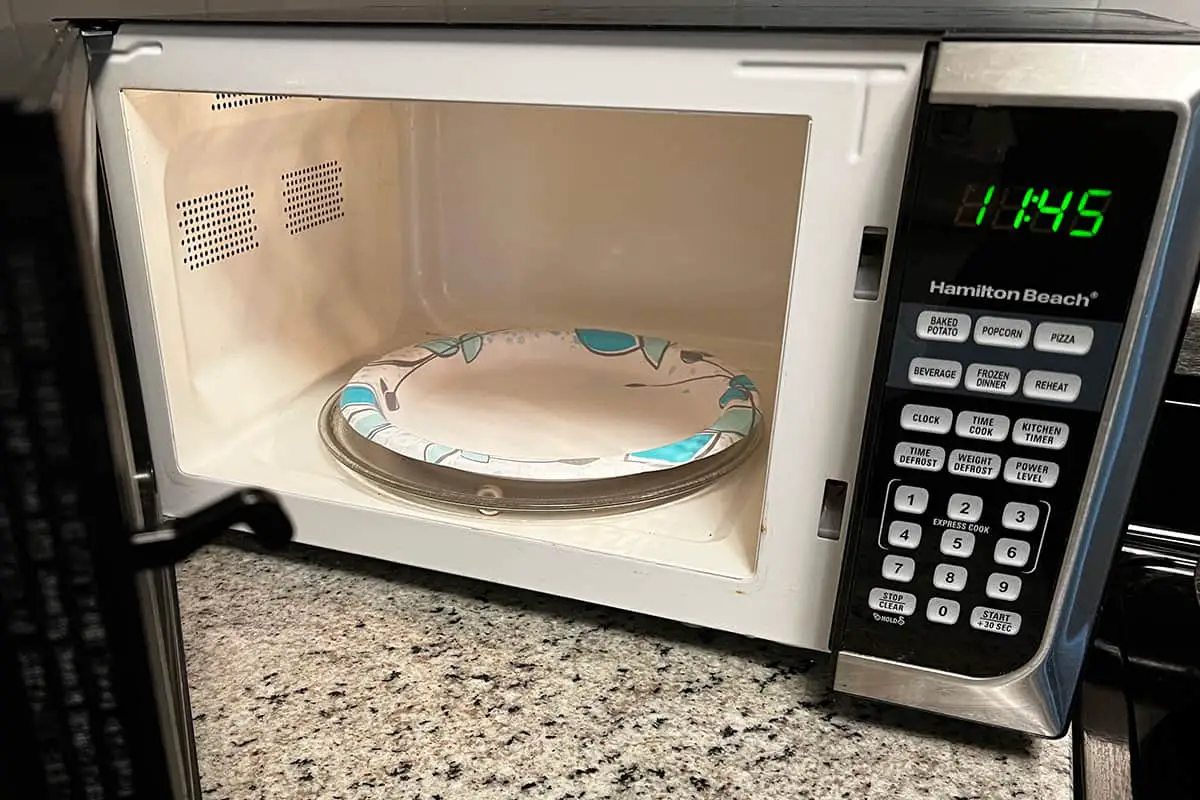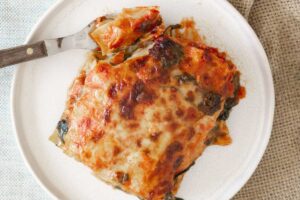This page may contain affiliate links. If you click and buy, we might get a small commission at no cost to you.
Microwaves provide one of the best ways to make a quick meal and can be found in nearly every kitchen. There are endless possibilities for what you can cook up on days when you feel lazier. However, not every kind of material can withstand the waves used to heat up food, so you should be cautious of the kind of dishes you use. If you’re hoping to use paper plates in your microwave you’re no doubt wondering how safe it is.
Can you microwave paper plates?
In general most plain paper plates are microwave safe. However, there are many types of paper plates, all made from different materials.
The truth is, it depends on what kind of plates you have if they can safely be used to heat up food. Plates made of just paper are completely safe in the microwave, but some have a plastic film and should not be heated up.
Paper Plates and Microwaves
You can find a variety of paper plates on the market today, and they aren’t all made of the same materials. Some plates are made of just paper, but others include plastic to reinforce the product.
In general, most products made of just paper are fine to use in your microwave. Newspapers and brown paper bags are the main exceptions to this rule. The bags could catch on fire, while ink from newspapers will run when heated up.
Some paper plates with plastic coverings are still microwave-safe, depending on the kind of plastic used by the manufacturers. Packaging information for your paper plates should include a label stating if it is safe for microwave use or not.
If they aren’t, any plastic coating could melt into your food, and become toxic. If for some reason you can’t find any product information, there are certain ways you can test the safety of your plates.
Testing for Safety
There are certain ways you can test your paper plates for microwave safety, before using them to heat up any food. You might not have the packaging information, or it might not explicitly state safety guidelines, but there’s a simple way to find out.
Here is a quick step by step guide;
- Place a small bowl of water into the microwave with the plate you want to test.
- Microwave the bowl and plate on high power for one minute.
- When the minute is over, gently touch the plate. Be careful, because some plates will get quite hot.
- If the plate does get really hot it isn’t microwave-safe, because it has absorbed the heat. Plates that can still easily be grabbed and are barely warm are microwave safe.
The test can work for paper plates and similar kitchen products, but it isn’t a 100% method. Some harmful chemicals might still be present without the plate heating up.
Keep in mind that even when using a microwave-safe paper plate it should only be heated up for a short amount of time. Exposing any plates to high powered heat for too long will eventually cause them to warm up.
Another thing to look out for is BPA-free paper plates and kitchen dishes. Since BPA chemicals can cause food to become toxic, you should try to find products without them present.
These kinds of plates are typically also safe to be used in a microwave. However, there is no way to find out if your products are BPA-free if the packaging doesn’t state it.

Other Microwave Safe Options
If you don’t have any paper plates, or the ones you do have aren’t safe to heat up, there are a number of other common kitchen products you can use. The following materials are typically safe to use in a microwave.
Glass and ceramic: if you have glass and ceramic pots and plates they should be completely safe to heat up in your microwave. You just have to be certain there’s no metallic paint anywhere on the dishes.
Tupperware: while certain plastics, such as a single-use, should never be used in the microwave, some plastic materials are made for it. This includes Tupperware, as long as none of the plastic has been broken or cracked.
Paper towels: most paper towels are safe for microwave use, as long as you check the food at frequent intervals. Just make sure they don’t have any printing on them. You should also never microwave brown or recycled paper towels.
Things You Should Never Microwave
While there are plenty of microwave-safe options you can find in your kitchen, there are certain products you should never put in a microwave.
These include:
- Styrofoam: most styrofoam isn’t microwave-safe unless it explicitly states otherwise.
- Cardboard: cardboard might be a paper product, but it should never be put in a microwave. The glues and waxes are usually toxic and risk catching fire.
- Metal: you should never put crumpled aluminum foil or any other kinds of metals into your microwave. They will reflect the heat inside, and won’t take long to cause a fire. Foil is safe if it is flattened.
In general, products that are microwave-safe will have some kind of label stating so. If you aren’t sure, you can perform a quick test, or grab a dish that you know is safe.



